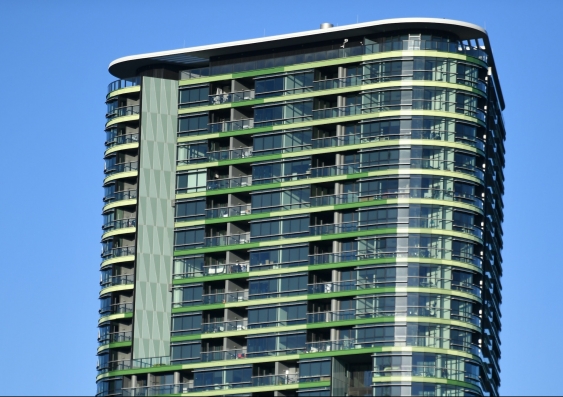Sydney's apartments are riddled with building defects
New research reveals it is nearly impossible for buyers to find high-quality information about the apartments they are considering purchasing, placing them at considerable risk.
New research reveals it is nearly impossible for buyers to find high-quality information about the apartments they are considering purchasing, placing them at considerable risk.

Buying an apartment is the biggest financial commitment many of us will ever make. Unfortunately, shows that defects in apartment buildings are commonplace: just over half of Sydney’s apartments had at least one type of defect, while more than one in four had at least three different defects. We also found it is virtually impossible for buyers to know whether the apartment they are buying is good quality.
This is perilous for prospective home-buyers, given the market is based on the idea of “buyer beware”, which means it is the buyer’s responsibility to make sure they are happy with the quality before they sign the contract. It also represents a clear case of market failure.
Building defects in apartments have been in the news a lot in NSW since in late 2018. The NSW parliament is now holding its into the issue. And this week, that an engineer’s report has found an apartment building in Sydney’s south-west to be at serious risk of collapse due to structural flaws.
Read more:��
But despite all the attention, it’s been very difficult to get reliable figures on just how common building defects in apartments are. We set out to tackle this question by collecting information about defects for a random sample of 635 strata schemes completed between 2008-2017 across three Sydney local government areas.
Among the strata schemes for which we found detailed information, 51 per cent had at least one type of building defect. Even more concerningly, 28��per cent��had at least three types of defects, and 12��per cent��had more than 10 different types.
These aren’t just insignificant, cosmetic issues like broken tiles – common problems included water leaks, cracking and flaws in fire safety systems. These results align with by the NSW Building Commissioner, based on a survey of strata managers, which found four in ten recently completed buildings have “some form of major defects”.
Read more:��
We also interviewed 66 industry experts, and only three said they didn’t think defects had become more common in recent decades.
While these findings are worrying, we believe our figures are actually conservative estimates of the true number of defects in strata schemes, given the difficulty we had getting detailed records. For many buildings in our sample, we couldn’t locate reliable information about whether defects existed or not, despite having a team of researchers working on the task and considerable support from our industry partners.
This experience has led us to conclude the apartment market in NSW has a serious problem with “information asymmetry”. This means sellers have far more information than buyers about the underlying quality of the apartments for sale, and there is no way for buyers to be confident about the quality of the building they are considering buying into. This puts them at real risk of buying a property with defects, which they will then be responsible for fixing.
The process of defect rectification can put significant stress on people’s health and well-being, and their finances. In the , the building may pose a serious safety risk, or owners may be left with a property nobody wants to buy.
Read more:
On a more positive note, much has changed in NSW since the Opal Tower evacuation. In mid-2019, the government introduced a new (OBC), with responsibility for improving the quality of construction and stamping out poor building practices. The OBC has introduced new laws and provided more oversight of the construction industry, and the early evidence is that building quality is improving. This means fewer owners should have to struggle with rectifying defects in future (if you’re in this situation right now, this may help).
It is vital to improve the quality of construction so fewer defects occur, but we will never eradicate defects completely. To protect all owners and residents, we also need to make sure that when buildings have defects, it’s easier to find out about them and understand their impact. Buyers should be able to factor this in when considering a property. And owners who have defects should get more support from government to get them fixed.
Read more:��
While the OBC has now made it easier for owners to take legal action against developers and builders for defective work, there is much more to be done. In particular, improving the processes for inspecting buildings and reporting defects would help, as would a . We also need to improve the quality and consistency of , which are the main way buyers can research any issues a building might have.
To make sure all these things happen, we need the NSW government to commit to keeping the OBC in place long-term and giving it the resources it needs to keep bolstering the rights of apartment owners and buyers. It’s not fair to make apartment owners run the gauntlet of an opaque market, or bear the cost and responsibility of fixing mistakes that others have made.
With one in five NSW households living in private apartments (plus more in public housing), the safety and security of apartment living needs to be a top government priority.
![]()
, Senior Lecturer in City Planning, ; , Professor, City Futures Research Centre, Faculty of the Built Environment, ; , Scientia Associate Professor, City Futures Research Centre, , and , Professor of Construction Management,
This article is republished from under a Creative Commons license. Read the .